The defeat of the tank army "Africa" in Libya
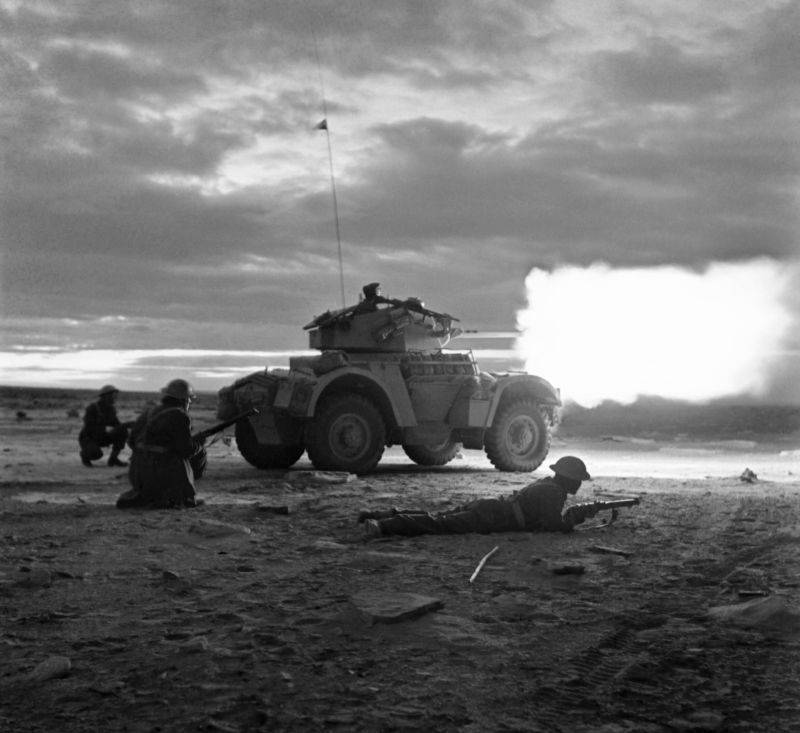
British armored car "Daimler" Mk. I and infantry firing at the beginning of the attack on Tripoli in the early morning of January 18, 1943
Breakthrough of the German defense
On the night of November 1-2, 1942, the British army resumed its offensive - Operation Reload began. The British carried out heavy artillery preparation and a massive RAF raid. The headquarters of the German Afrika Korps came under attack. Then three tactical groups formed on the basis of the 50th and 44th infantry divisions, reinforced by 800 tanks and 360 guns, went to storm the enemy positions. The German-Italian troops fought back fiercely. The British 9th Armored Brigade lost more than 80 tanks, but broke through the enemy defenses by dawn. Hundreds of tanks of the 10th Corps followed the infantry and turned to the northwest.
By 15:30 Rommel received word that the Afrika Korps had 35 tanks. The divisions were drained of blood, left without equipment. In the evening, the commander gives the order to retreat. Rommel informs the High Command of the Ground Forces that the army, after 10 days of stubborn fighting with superior enemy forces, is exhausted and cannot withstand the enemy's armored formations. Due to the lack of vehicles, it is impossible to completely withdraw 6 Italian divisions and 2 German non-mechanized ones. Most of these troops, apparently, will overtake the enemy's mobile formations. Even motorized formations, exhausted in battles, will not be able to partly break away from the enemy. All the ammunition is on the front line, there are almost no stocks in the rear. Little fuel. The roads are being attacked by enemy air forces.
Rommel's conclusion was pessimistic:
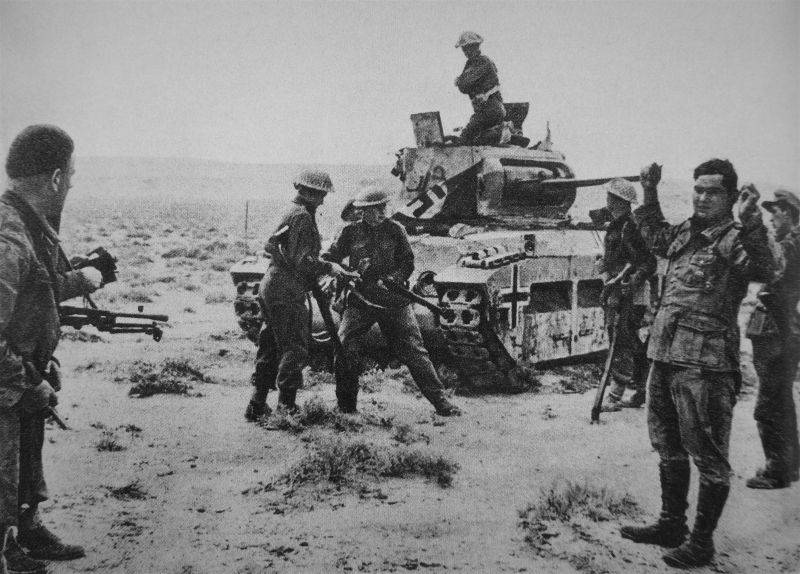
New Zealand soldiers and German prisoners of war at the Matilda tank near El Alamein. The British tank "Matilda" was previously captured by the Germans and used by them during the fighting near El Alamein
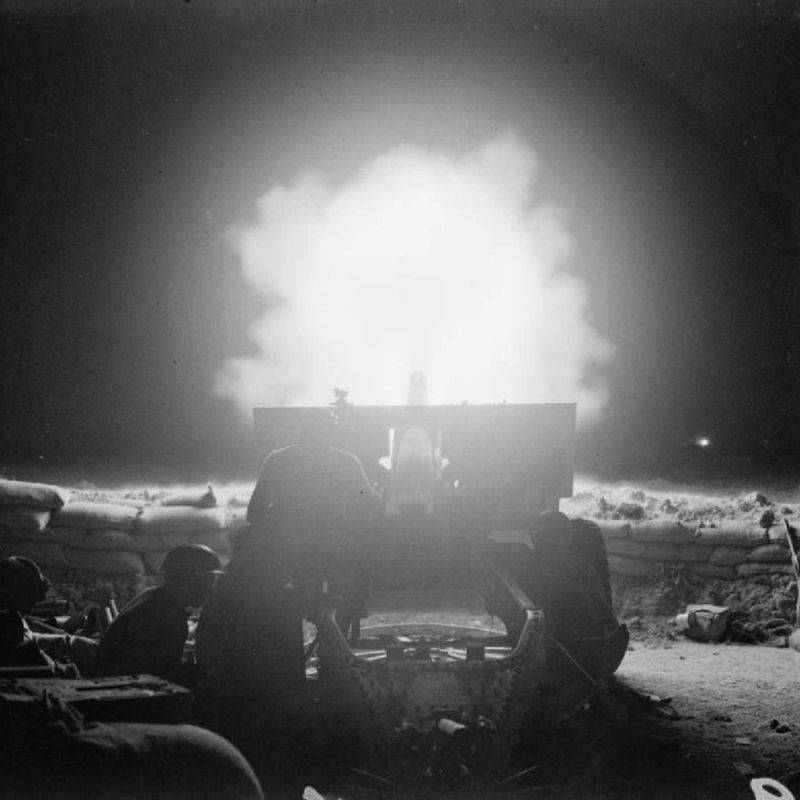
British gunners firing from an 87mm howitzer cannon in the El Alamein area
Retreat
On the night of November 2-3, 1942, the retreat of the Afrika army to the Fuka line began. The retreat was covered by the German Afrika Korps. On the morning of November 3, Hitler, who had read Rommel's report and was furious, ordered the African army to stand to the death and throw out the very idea of retreating. The Fuehrer promised reinforcements for air support. The Duce and the Italian high command also had to do everything to strengthen the defense.
In the afternoon, Rommel had to cancel the order to retreat. The commander also informed the headquarters that the losses of infantry, anti-tank and sapper units had reached 50%, only 24 tanks remained in the African Corps. The Italian tank divisions of the 20th Corps - the 133rd "Littorio" and the 132nd "Ariete", were defeated.
Rommel advanced part of the corps to the forefront, but his forces were not enough to stop the superior enemy. The commander of the 8th Army, Montgomery, threw on the flank of the African Corps three armored divisions - the 1st, 10th and 7th. A total of 650 tanks. At dawn on November 4, British tanks entered the operational space. The British crushed the remaining parts of the Italian 20th motorized corps, the Brescia infantry division from the 21st corps. In the south, the Italian 10th Corps was cut off from its own, deprived of water and fuel. On the same day, the commander of the African Corps, General of the Tank Forces, Wilhelm von Thoma, was captured.
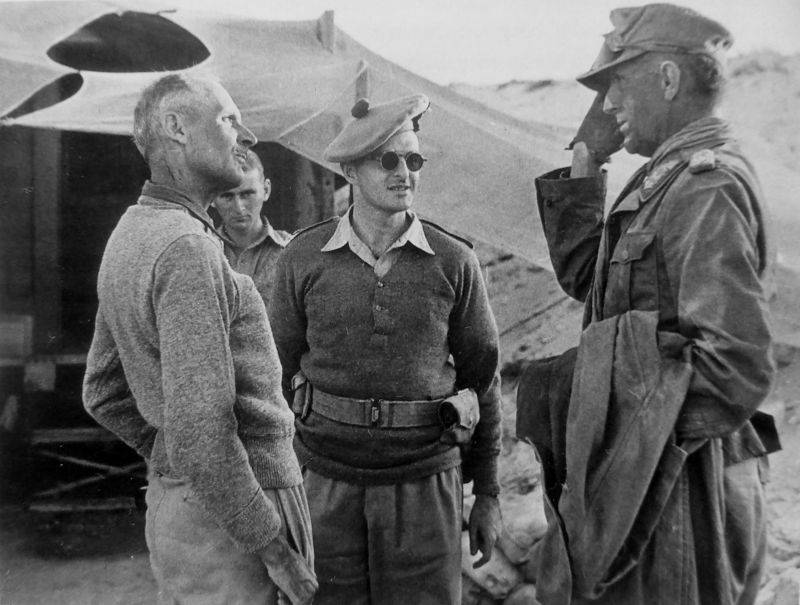
The commander of the 8th British Army, General Bernard Montgomery, meets the commander of the German African Corps, Wehrmacht Panzer General Wilhelm von Thom (right), who was captured on November 4, 1942 during the battle of El Alamein in Egypt. As a sign of mercy to the defeated enemy, von Thoma was invited by General Montgomery to dinner. This fact caused a scandal in the English press.
German troops were able to avoid encirclement. The commander-in-chief of the German forces in the Mediterranean, Kesselring, agreed with Rommel's arguments and confirmed the order to retreat. In the evening Hitler also approved the withdrawal order.
Thus, in 13 days of fighting, the "Africa" army suffered a heavy defeat. Only prisoners lost about 28 thousand people (about 8 thousand Germans and 20 thousand Italians). About 8 thousand more were killed and wounded. The Italian 20th motorized corps was practically destroyed, the 10th corps was left without transport, water and fuel. The German African Corps was equal in size to a regiment.
British troops suffered heavy losses when breaking through the enemy defenses - about 14 thousand people, up to 600 tanks. But Montgomery declared "complete and absolute victory."
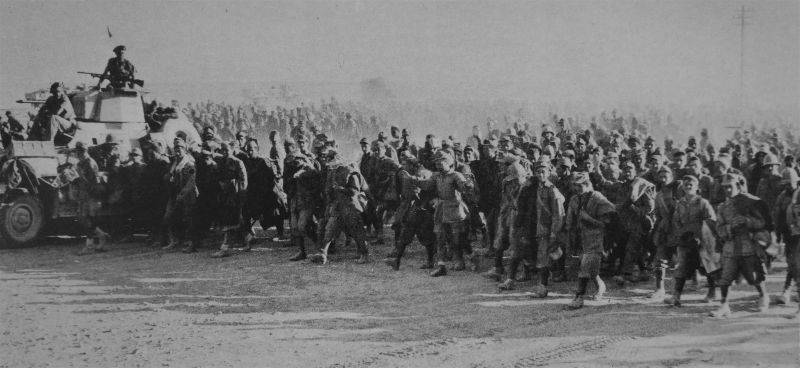
New Zealand soldiers escort Italian prisoners in the El Alamein area. On the left in the frame is the Marmon-Herrington Mk. III. November 1942
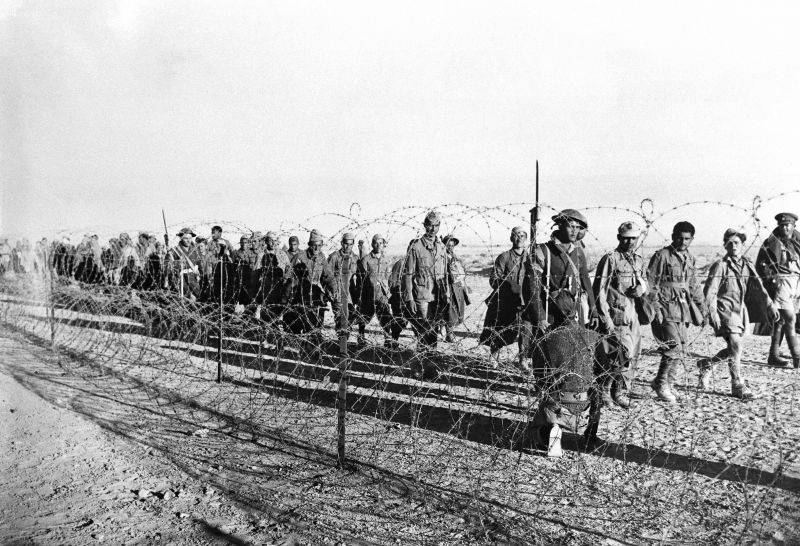
A column of Italian prisoners of war, taken prisoner by South African troops in the Western Desert, is escorted to the camp. December 1942
The pursuit
The British, apparently not ready for such a situation, failed to continue the offensive on the move and finish off the enemy. They were inactive for more than a day, allowing the Germans to break away.
Only on November 5, 1942, the persecution began. But it went slowly and carefully, the allies feared the trap of a cunning enemy. Montgomery refused to rush mobile formations along the coast, in order to then turn inland, cutting off the retreating enemy columns. The commander forbade fast dashes forward, as he was afraid that his troops would be thrown back, as was the case with his predecessors.
This helped Rommel save the remnants of the army. The Germans moved west, stopping only at warehouses to refuel equipment. On November 6, the Germans eluded the enemy east of Mersa Matruh. Downpours on the night of 6/7 November slowed down the Allied advance. On November 8, the situation worsened - the Americans landed in Algiers and Morocco. On November 10, a group of German troops under the command of General Nerung went to Tunisia. Rommel was given the task of connecting with Nering's troops as quickly as possible.
On the night of November 10-11, the Allies occupied the Halfaya pass and defeated the Italian Pistola division. On November 13, the tanks of the 7th Armored Division entered Tobruk. But the rains again slowed the allies. This allowed the remnants of the "Africa" army to arrive at Ghazala in Cyrenaica. Rommel wanted to evacuate by sea and by air, but the high command forbade this. The troops were ordered to take up defensive positions along the Marsa el Brega line. On November 20, British tanks were in Benghazi.
On November 24, Rommel's troops were in Sidra Bay, on the line of Marsa el Brega - El Ageyla - Marada. The army stopped to rest and regroup. On the line of 170 km there were two tank divisions (in terms of strength they corresponded to a brigade - 35 tanks and 16 armored vehicles), the 90th division (a reinforced battalion remained), the 164th division (3 thousand soldiers without heavy weapons), a parachute brigade ( near the battalion). The remnants of the 20th Italian Corps (divisions "Ariete", "Littorio" and "Trieste") were reduced to a group equal in strength to one brigade - 30 tanks and 20 armored vehicles.
Soon the troops of the British 7th armored (120 tanks) and 51st infantry divisions arrived on the line. Allied troops were ordered to stop. The command of the 8th Army was preparing for a new offensive operation, the beginning of which was scheduled for December 15th.
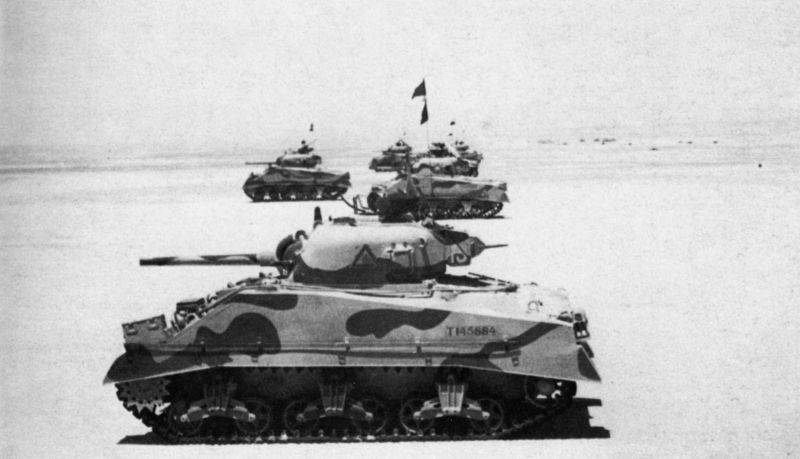
Tanks M-4 "Sherman" of the American production of the 4th Tank Regiment "Yeomen of the County of London" of the 7th British Armored Division "Desert Rats" in the desert near El Alamein. November 1942
Loss of Libya
Meanwhile, Rommel believed that it was necessary to go further. The army did not have fresh forces, means and resources to organize a solid line of defense. On November 24, the commander suggested that Kesselring and the Italian high command retreat further, to the line of Holmes or Buerat. Naturally, the Italians opposed. They did not want to lose their colony - Tripolitania. On November 26, Rommel repeated this proposal. Mussolini refused. The Duce ordered Rommel to hold the line of Mars el Brega at all costs and prepare a counterattack.
On November 28, Rommel, on his own initiative, flew to Berlin and arrived at headquarters. The Fuhrer, who was completely absorbed in the catastrophe of the 6th Army in Stalingrad, and did not want to hear about the retreat, again promised reinforcements. Rommel, on the way back to Africa, held meetings with Goering and Kesselring. He proposed a plan to transfer his army to Tunisia to connect with Nering and a quick operation against the Americans. On November 30, Mussolini allowed Rommel to withdraw to the Buerat line, located 300 km east of Tripoli.

On December 7–8, the withdrawal of German-Italian troops to the Buerat line began. The Italians were the first to retreat. On December 13, the British launched an offensive, but again they were too late. Rommel completed his withdrawal from the El Agheila line. On December 15, the British overtook the Afrika Korps, which was delayed due to lack of fuel. The commander of the Afrika Korps, Gustav Fen, sent two tank divisions to break through. The Germans found a weak point in the Allied defense and laid a corridor for their corps.
On December 17, Rommel and the Libyan Governor-General Bastico agreed on the withdrawal of troops to the Homs line near Tripoli itself. But Rome did not approve of this decision. On December 21, the British army continued to advance, but moved slowly. The advance was slowed down due to the large number of minefields and mine traps placed by German sappers. On December 31, the Duce allowed the army to withdraw to the Buerata line. This was the last position before Tripoli. Mussolini demanded to stand here as long as possible.
On January 15, 1943, after artillery preparation and air strikes, the British 8th Army resumed its offensive. The 51st Infantry Division stormed the coastal road. The 7th Armored and 2nd New Zealand Infantry Divisions went around the enemy positions. The British fielded 450 tanks against 36 German and 57 Italian. On the southern flank, the German 15th Panzer Division began to retreat, holding back the enemy with rearguard battles. On the northern flank, the African Corps slowly broke away from the enemy and moved to the inner line of defense 80 km from Buerat. The withdrawal was successful. The 51st Division moved forward very slowly and with great difficulty.
On January 17, Rommel ordered a retreat further to the line of Homs. Fearing a detour from the flanks, on the 19th the commander gave the order to retreat even further. On 21 January Panzer Army Africa was west of Tripoli. On January 23, the British entered Tripoli. On January 26, Rommel entered Tunisia. On January 31, the remnants of the German-Italian army left Libya.
The Libyan campaign ended in a heavy defeat for the Axis countries. Tunisia remained the last stronghold of the German-Italian troops in North Africa.
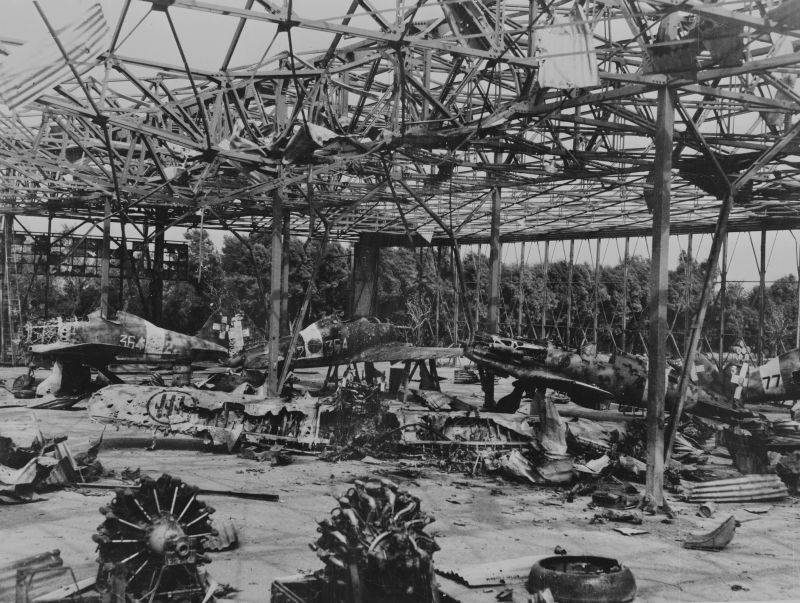
Broken Italian equipment of the Italian Air Force in Tripoli
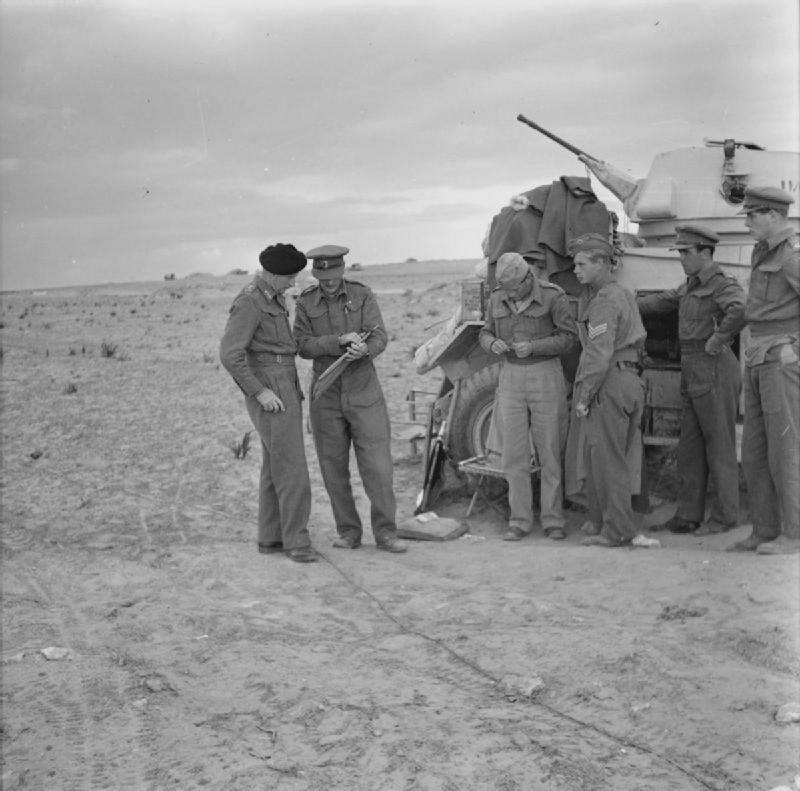
The commander of the British 8th Army, General Bernard Montgomery, discusses the details of the attack on Tripoli with an officer of his headquarters at the armored car "Humber" Mk. II. January 1943
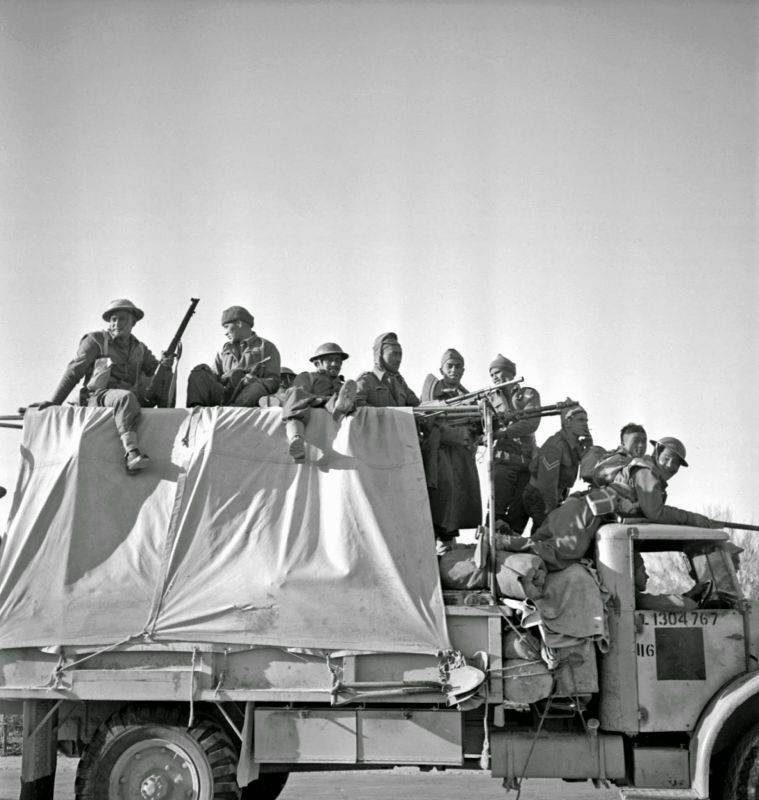
English tankers welcome the hoisting of the British flag on the tower of the Kazba-as-saray-al-Hamra (Red Palace) fortress in Tripoli. Cars are parked on Maidan ash-Shughada Square (Square of the Fallen for Freedom). Tankers sit on the armor of infantry tanks Mk. II "Valentine" from the 11th Hussars of the 7th Armored Division.
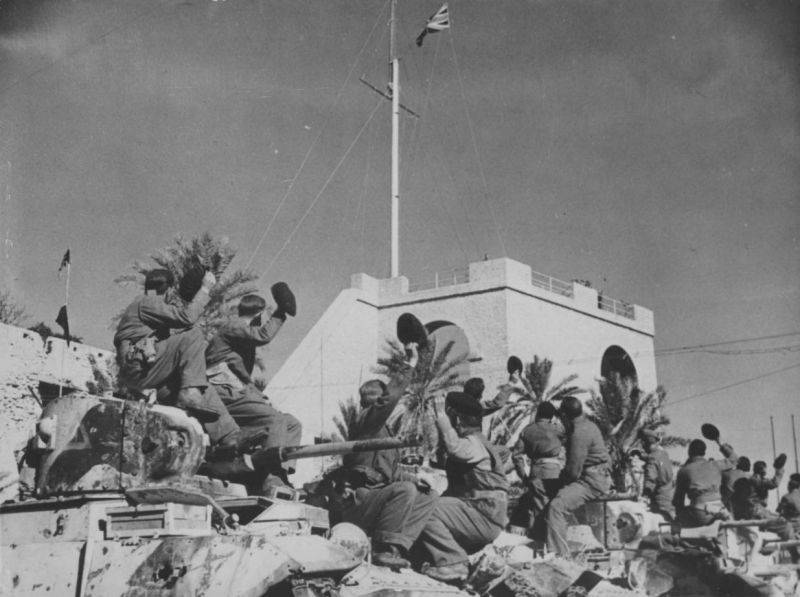
Soldiers of the 28th Infantry Battalion (Maori Battalion) of the New Zealand Army on the march from El Alamein (Egypt) to Tripoli (Libya). Soldiers move in a Ford-F30 car
Information